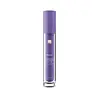What's inside
What's inside
 Key Ingredients
Key Ingredients

 Benefits
Benefits

 Concerns
Concerns

 Ingredients Side-by-side
Ingredients Side-by-side

Water
Skin ConditioningHamamelis Virginiana Extract
AntiseborrhoeicSalix Alba Bark Extract
AstringentAloe Barbadensis Leaf Juice
Skin ConditioningLactic Acid
BufferingPhytic Acid
Polyglyceryl-6 Caprylate
EmulsifyingPolyglyceryl-3 Cocoate
EmulsifyingPolyglyceryl-4 Caprate
EmulsifyingPolyglyceryl-6 Ricinoleate
EmulsifyingGalactoarabinan
Glycerin
HumectantPhenoxyethanol
PreservativeEthylhexylglycerin
Skin ConditioningSaccharide Isomerate
HumectantCitric Acid
BufferingSodium Citrate
BufferingLavandula Angustifolia Oil
MaskingSalvia Sclarea Oil
MaskingHydroxyethylcellulose
Emulsion StabilisingLinalool
PerfumingLimonene
PerfumingGeraniol
PerfumingWater, Hamamelis Virginiana Extract, Salix Alba Bark Extract, Aloe Barbadensis Leaf Juice, Lactic Acid, Phytic Acid, Polyglyceryl-6 Caprylate, Polyglyceryl-3 Cocoate, Polyglyceryl-4 Caprate, Polyglyceryl-6 Ricinoleate, Galactoarabinan, Glycerin, Phenoxyethanol, Ethylhexylglycerin, Saccharide Isomerate, Citric Acid, Sodium Citrate, Lavandula Angustifolia Oil, Salvia Sclarea Oil, Hydroxyethylcellulose, Linalool, Limonene, Geraniol
Water
Skin ConditioningButylene Glycol
HumectantGlycerin
HumectantPolysorbate 20
EmulsifyingCamellia Sinensis Leaf Extract
AntimicrobialEuterpe Oleracea Palm Heart Extract
EmollientCoffea Arabica Husk Extract
AntioxidantAnthemis Nobilis Flower Extract
MaskingTocopheryl Acetate
AntioxidantGlycolic Acid
BufferingHydroxyethylcellulose
Emulsion StabilisingLavandula Angustifolia Oil
MaskingMelaleuca Alternifolia Leaf Oil
AntioxidantPhenoxyethanol
PreservativeCaprylyl Glycol
EmollientSorbic Acid
PreservativeWater, Butylene Glycol, Glycerin, Polysorbate 20, Camellia Sinensis Leaf Extract, Euterpe Oleracea Palm Heart Extract, Coffea Arabica Husk Extract, Anthemis Nobilis Flower Extract, Tocopheryl Acetate, Glycolic Acid, Hydroxyethylcellulose, Lavandula Angustifolia Oil, Melaleuca Alternifolia Leaf Oil, Phenoxyethanol, Caprylyl Glycol, Sorbic Acid
 Reviews
Reviews

Ingredients Explained
These ingredients are found in both products.
Ingredients higher up in an ingredient list are typically present in a larger amount.
Glycerin is already naturally found in your skin. It helps moisturize and protect your skin.
A study from 2016 found glycerin to be more effective as a humectant than AHAs and hyaluronic acid.
As a humectant, it helps the skin stay hydrated by pulling moisture to your skin. The low molecular weight of glycerin allows it to pull moisture into the deeper layers of your skin.
Hydrated skin improves your skin barrier; Your skin barrier helps protect against irritants and bacteria.
Glycerin has also been found to have antimicrobial and antiviral properties. Due to these properties, glycerin is often used in wound and burn treatments.
In cosmetics, glycerin is usually derived from plants such as soybean or palm. However, it can also be sourced from animals, such as tallow or animal fat.
This ingredient is organic, colorless, odorless, and non-toxic.
Glycerin is the name for this ingredient in American English. British English uses Glycerol/Glycerine.
Learn more about GlycerinHydroxyethylcellulose is used to improve the texture of products. It is created from a chemical reaction involving ethylene oxide and alkali-cellulose. Cellulose is a sugar found in plant cell walls and help give plants structure.
This ingredient helps stabilize products by preventing ingredients from separating. It can also help thicken the texture of a product.
This ingredient can also be found in pill medicines to help our bodies digest other ingredients.
Learn more about HydroxyethylcelluloseLavandula Angustifolia Oil is more commonly known as lavender essential oil. It is considered a fragrancing ingredient.
Lavender imparts a famous scent. While the smell is lovely, this ingredient and may sensitize skin in topical products. This is because about 85% of the oil is made up of linalool and linalyl acetate.
When exposed to air, these two compounds become strong allergens. This ingredient exhibits cytotoxicity at low concentrations; amounts of 0.25% have been shown to damage skin cells.
A study from Japan found this ingredient caused lavender sensitivity after widespread exposure.
Lavender essential oil has some antimicrobial, antibacterial, and anti-inflammatory properties. However, the cons of this ingredient may outweight the pros.
More research is needed to confirm lavender essential oil's effects when used in aromatherapy.
Lavandula Angustifolia is known as the English Lavender and famous for creating purple fields in Provence, France.
Learn more about Lavandula Angustifolia OilPhenoxyethanol is a preservative that has germicide, antimicrobial, and aromatic properties. Studies show that phenoxyethanol can prevent microbial growth. By itself, it has a scent that is similar to that of a rose.
It's often used in formulations along with Caprylyl Glycol to preserve the shelf life of products.
Water. It's the most common cosmetic ingredient of all. You'll usually see it at the top of ingredient lists, meaning that it makes up the largest part of the product.
So why is it so popular? Water most often acts as a solvent - this means that it helps dissolve other ingredients into the formulation.
You'll also recognize water as that liquid we all need to stay alive. If you see this, drink a glass of water. Stay hydrated!
Learn more about Water